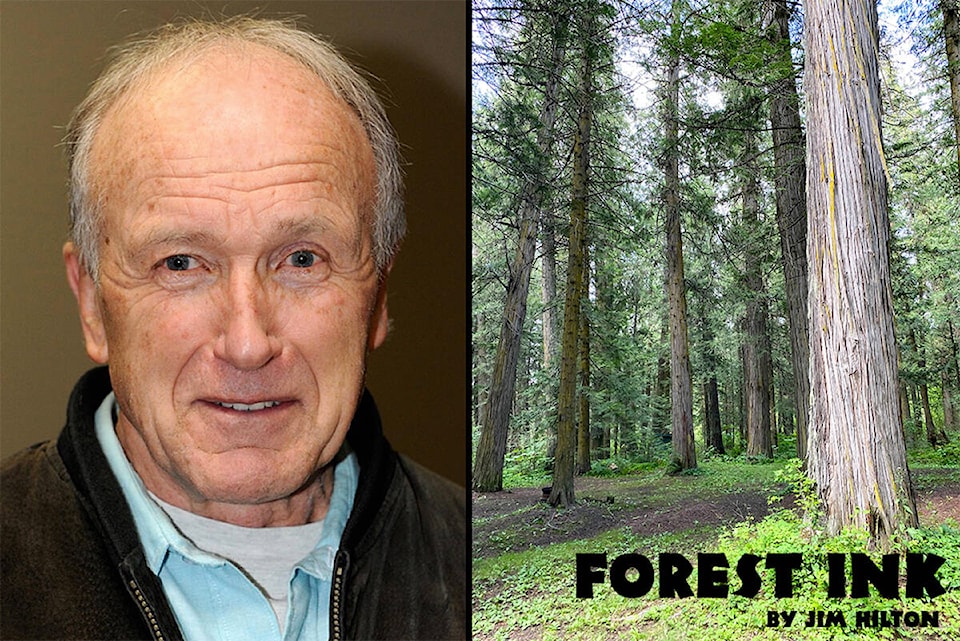I wrote an article about Suzanne Simard in August 2019 after hearing an interview on the CBC and listening to a TED talk. My wife was also interested in her work so suggested we order her book — Finding the Mother Tree - Discovering the Wisdom of the Forest. Once I started reading it was hard to put it down. As I was learning about her early years growing up in the Mable Lake - Enderby area I realized that we had some common interests as I have two sisters that live in the same area. It turns out that my younger sister and her husband bought land from her grandparents at the mouth of the Shuswap River on Mable Lake.
After obtaining her under graduate degree and working at a number of forestry jobs she had a lot of questions about forest soils and why some of the planted tree seedlings she saw were not nearly as healthy looking as the naturally established ones. In 1990 she had the opportunity to work for Alan Vyse the research forester in the Kamloops region who was also interested in the same questions . I got to know Alan and his family when we both worked with the forest service in Williams Lake in the 1970s.
With Alan’s guidance her job was to set up a trial in some logging blocks in the high elevation Engelman Spruce- Subalpine Spruce stands near Blue River. The planted seedlings had not done well and were being out-competed by the native plants so the licensee was proposing aerial herbicides (Roundup).
The trial was set up to test various levels of herbicides, along with a manual weeding program and of course controls to see how the treatments differed from doing nothing. Simard then goes on to describe in considerable detail the many other experiments that she worked on because each one seemed to raise as many questions as answers.
She also describes the equally frustrating process of interpreting the results along with fellow scientists, industry and government officials and how difficult it is to change existing forest practices. My understanding of what she described was that the herbicides and vegetation control did improve the growth of the conifer seedlings on some sites but the majority did not and the use of herbicides and some weeding was often negative.
The general conclusion was that the forests have developed with high biodiversity so that the long-term benefit of all species - conifers and deciduous - can do better together than on their own. As a result of her research some changes were made. The use of herbicides and weeding practices was reduced resulting in more profitable outcomes for licensees and healthier ecosystems on many sites.
Unfortunately it takes time for some to accept a radically new approach and old practices are still taking place. The use of the 10-year period in determining the free-to-grow may be acceptable for relieving the licensee of responsibility but may be very misleading in predicting long-term productivity and ecosystem health.
While Dr. Simard had realized many personal goals i.e. a professor position at UBC and world recognition of her decades of work she suffered some personal setbacks. The stress of commuting between her home in Nelson and her work at UBC, along with exposures to herbicides and radio active material in some of her plant soil network experiments may have contributed to her cancer.
It also didn’t help that her younger brother was killed in a farm accident and she separated from her husband around the time of her health issues.
Her book ends with how her graduate students are carrying on her work of over three decades with the hope that we can improve diversity and plant cooperation taking place in our forest ecosystems.
Jim Hilton is a professional agrologist and forester who has lived and worked in the Cariboo Chilcotin for the past 40 years. Now retired, Hilton still volunteers his skills with local community forests organizations.
READ MORE: COLUMNS: Herbicide use in forests reduces biodiversity
READ MORE: In the forest, a B.C. scientist discovers trees take care of their own
Like us on Facebook and follow us on Twitter.
